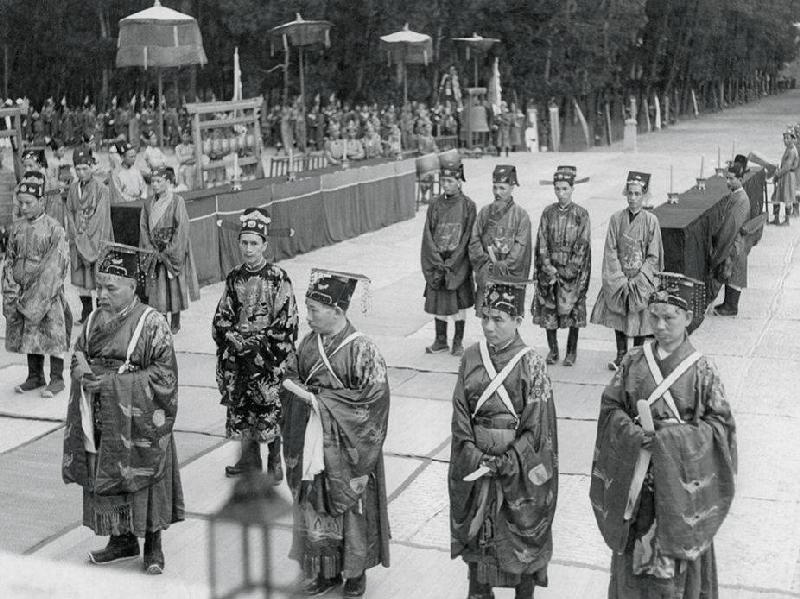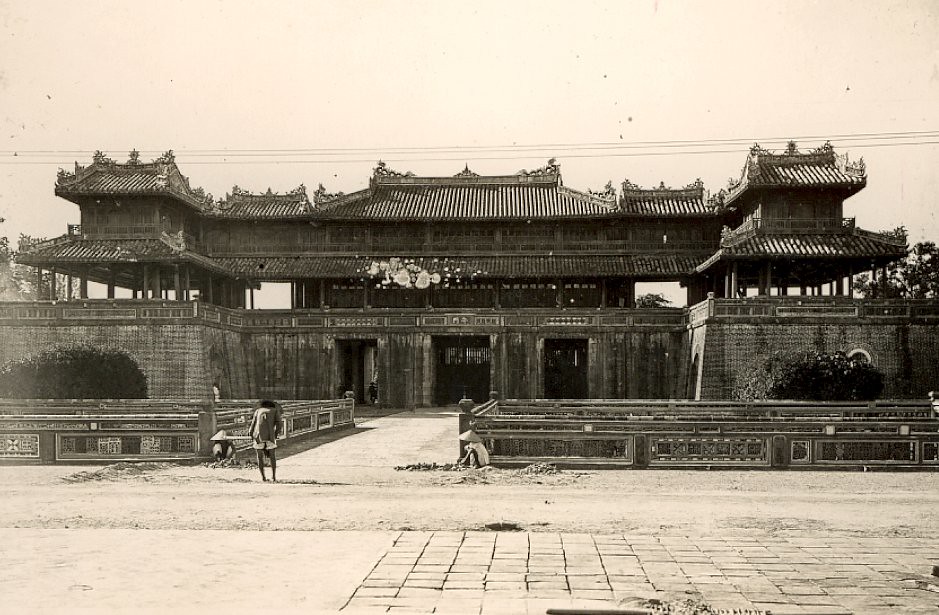Emperor’s Attire Of The Ly Dynasty – A Mark Of Royal Authority From The Daiviet’s Royal Court
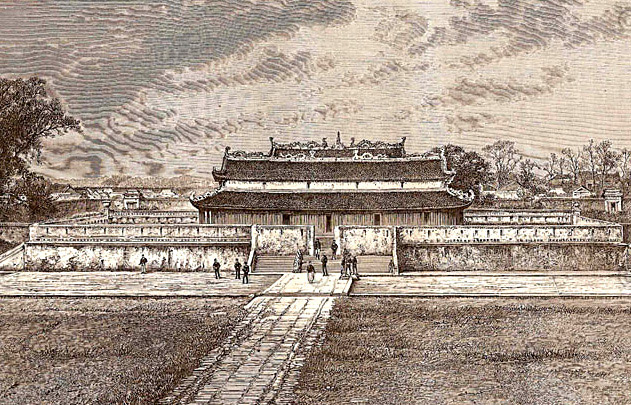
The Ly Dynasty (1009–1225) marked a crucial turning point in the history of Daiviet, ushering in a long period of independence and prosperity. This was also the era when Buddhism became the state religion, deeply influencing political life, culture, and art. In this context, the emperor’s attire was not merely personal clothing but a symbol of power, order, and the prevailing ideology. Unlike the later, more elaborate styles, the robes and headwear of the Ly emperors reflected a spirit of simplicity, solemnity, and a profound influence from Buddhist philosophy.
1. Ceremonial Attire
For the most solemn state rituals, the emperor donned the Ceremonial Attire, prominently featuring the Cổn Miện set. This formal ensemble included two key elements:
The Bình Thiên Hat (Mũ Miện): This hat was distinguished by its flat top, to which a wooden tablet (miện bản) was affixed. Hanging from this tablet were rows of pearl strings, known as “lưu,” twelve on each side. This precise number symbolized the emperor’s position as the Son of Heaven and his supreme authority.
The Cổn Robe: The accompanying robe was elaborately embroidered with twelve “chương” (ornamental symbols). These motifs were not merely decorative; they were profound symbols representing the entire universe and the emperor’s mandate to rule over all creation. They included the Nhật (Sun), Nguyệt (Moon), Tinh Thìn (Constellations), Tảo (Seaweed), Phấn mễ (White Rice), Phủ (Axe), Phất (The Á symbol – representing the two aspects of good and bad), Long (Dragon), Hỏa (Fire), Sơn (Mountain), Hoa trùng (Pheasant), and Tông di (A pair of goblets shaped like a tiger and a monkey, used in ancient sacrificial rituals).

The Cổn Miện from the Han Dynasty, featuring the Cổn robe with 6 chương and a skirt (Thường) with 6 chương
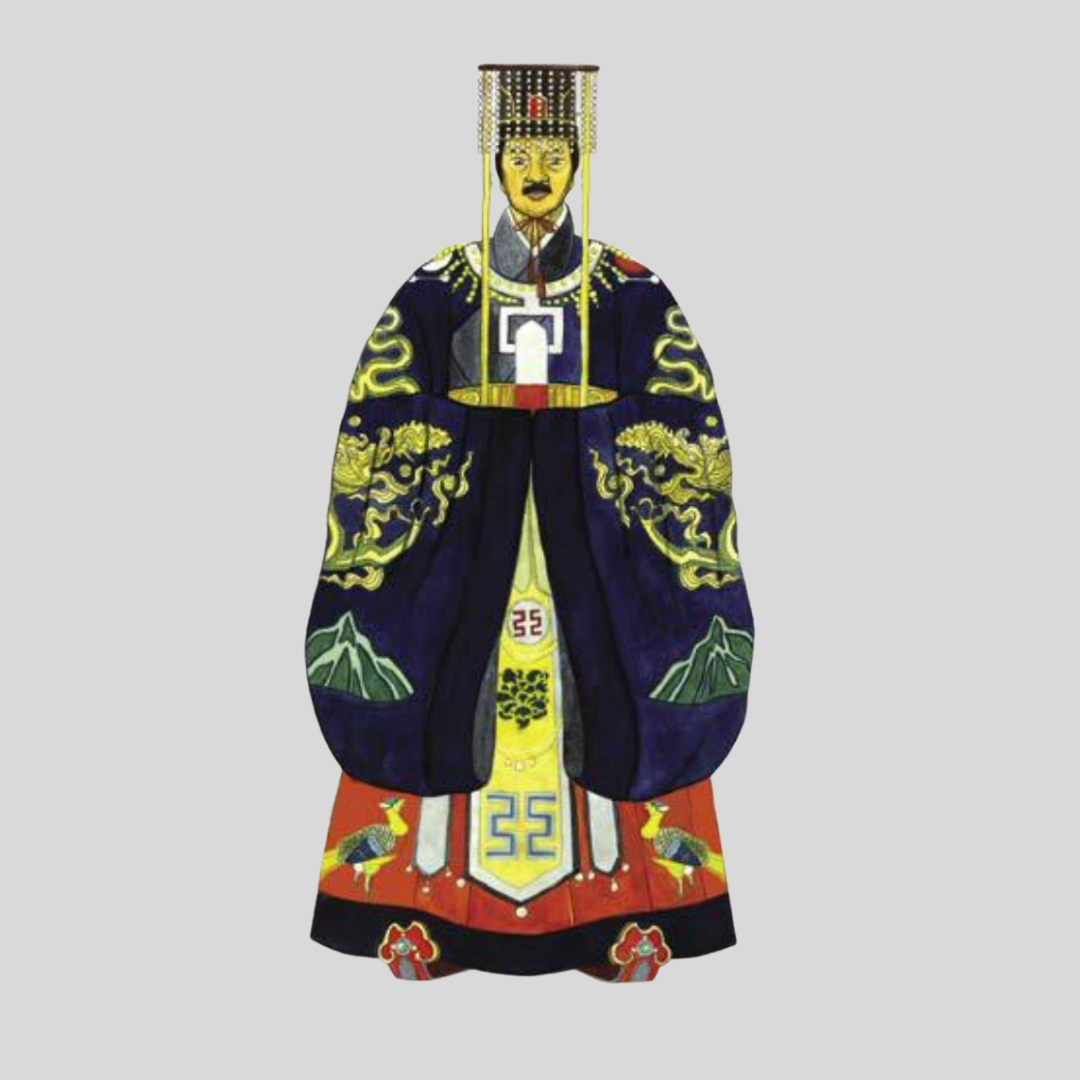
Reconstruction of the Cổn Miện attire during the Ly – Tran Dynasties, based on the Ngô thị gia bi stone relief
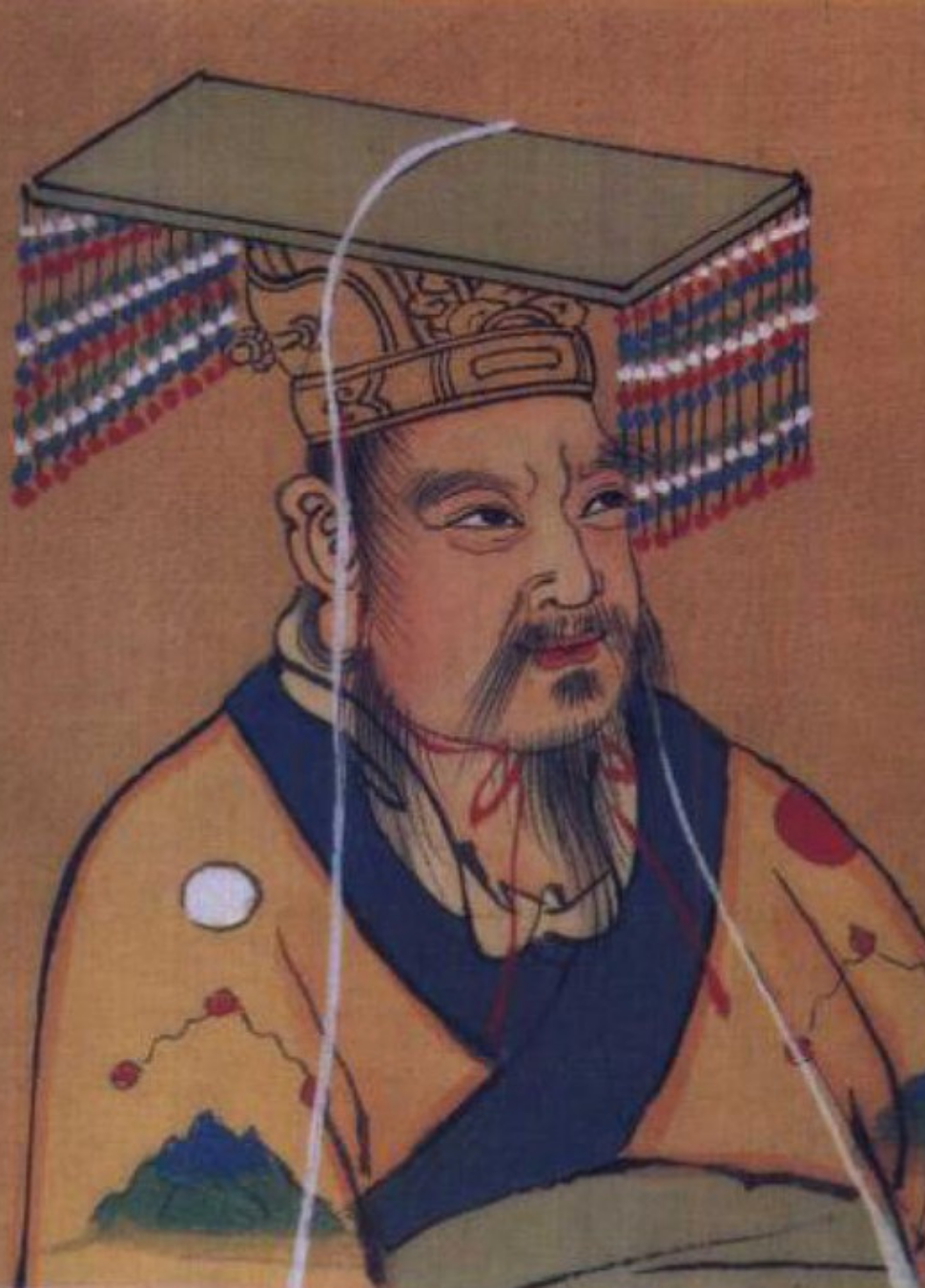
Liu Bei wearing the Mũ Miện with 12 lưu and the Cổn robe (Ming Dynasty drawing)
Based on the relief “Ngô gia thị bi” at Dau Pagoda (Ha Nam province), accompanied by the historical description by Le Tac during the subsequent Tran Dynasty, the Mũ Miện and the lưu strings shared a similar regulation to those in China. From this, it can be suggested that the structure of the Cổn Miện attire during the Ly-Tran Dynasties bore a relative resemblance to the Cổn Miện attire of the Tang-Song Dynasties. However, the patterns and accessories were Vietnamized to align with the philosophy and aesthetics of Daiviet.
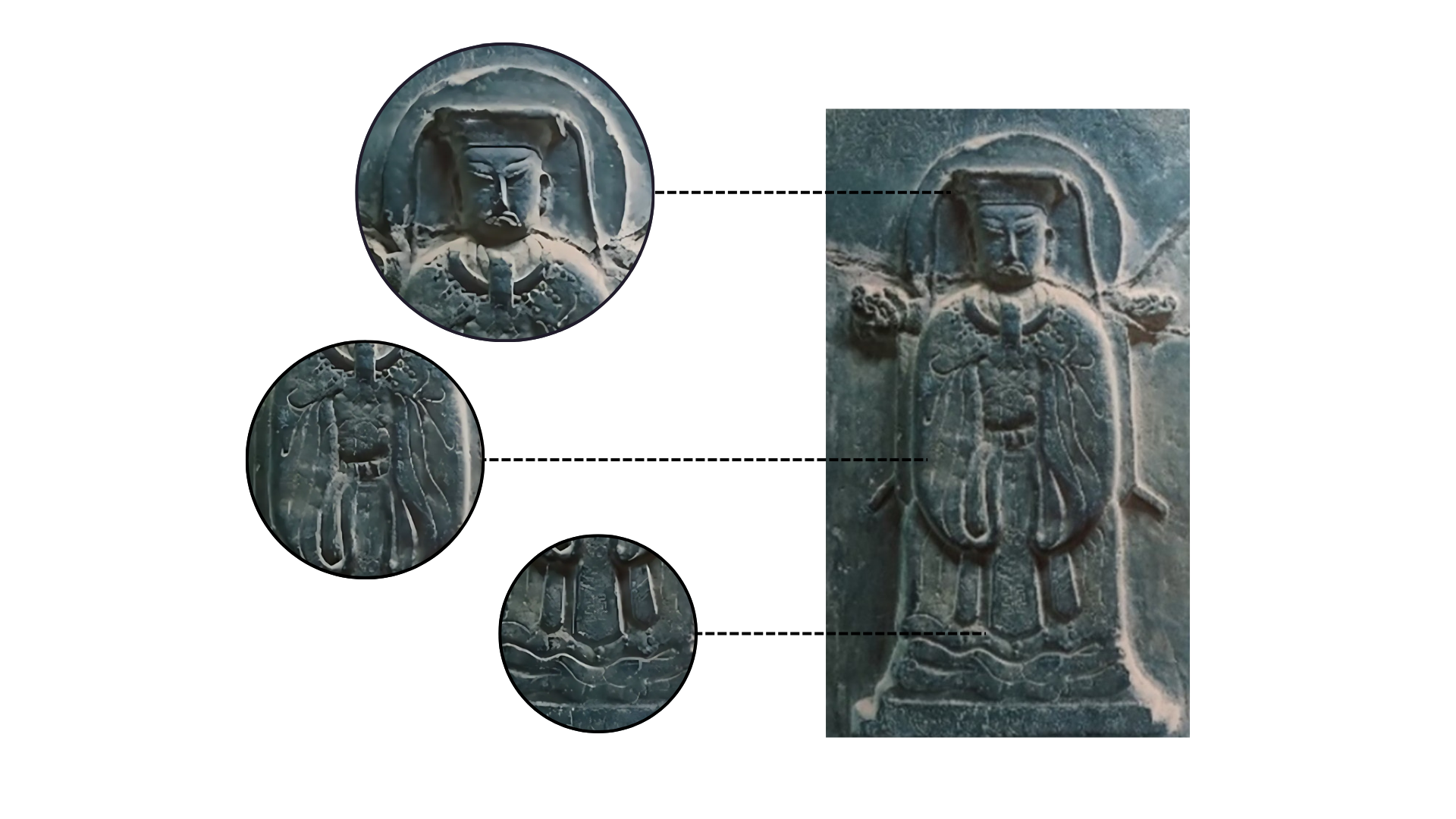
The Ngô gia thị bi stone stele (Dau Pagoda, Ha Nam, Vietnam)
2. Court Attire
During routine court sessions and daily governance, the emperor wore the Court Attire, widely recognized today as the Imperial Robe. This dress was noticeably less structured than the Ceremonial Attire, prioritizing ease of movement and practicality. Yet, it maintained the dignified silhouette of a long, wide-sleeved robe, necessary for maintaining imperial solemnity.
Accompanying the Court Attire was a unique type of headwear: the “Kim Bát Giác Tiêu Dao” hat, said to have been personally decreed by Emperor Ly Thai Tong. While its exact physical appearance remains a subject of historical debate, its existence highlights the imperial effort to establish distinct sartorial standards.

The Imperial Robe of the Liao King, excavated in Jiangbei
3. Informal Attire
The Informal Attire of the Ly emperor was the type of clothing worn in daily life, for rest, or while moving within the palace. The main features of the Informal Attire included a yellow Áo Sam (a type of robe) with a round neck, split flaps, and neat, convenient trousers (called thường – a wrap skirt). The colors were gentle, and the attire was not overly heavy with symbolism.
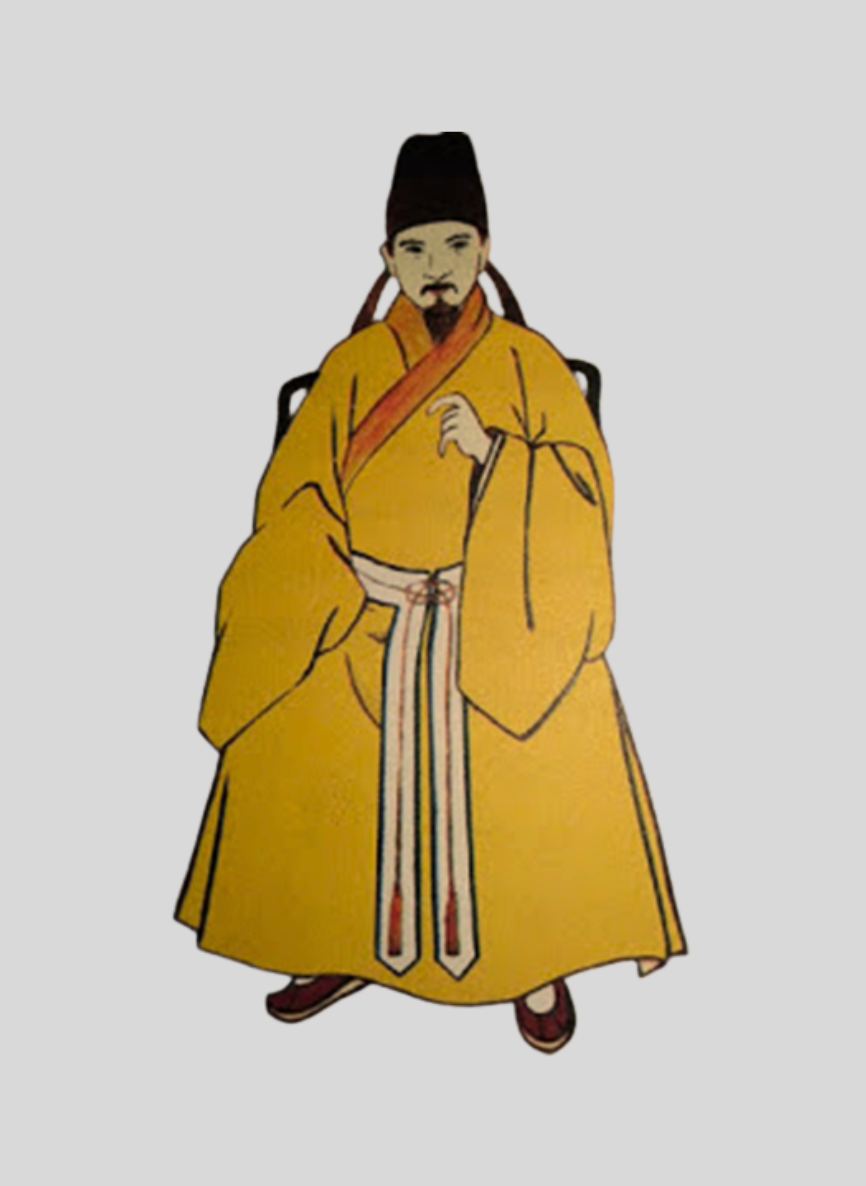
Reconstruction of the Informal Attire of a Tran Emperor
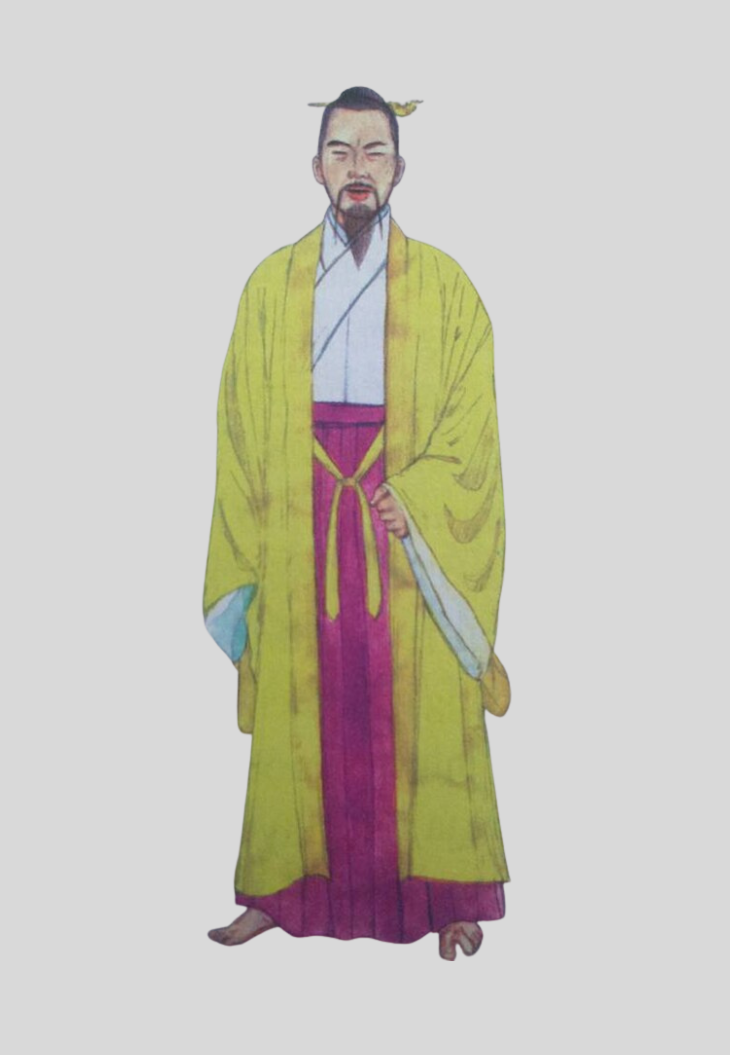
Informal Attire: Yellow robe and purple skirt








